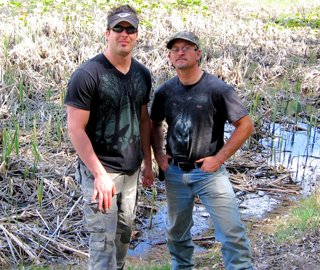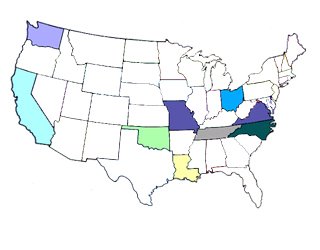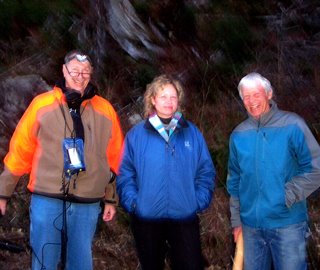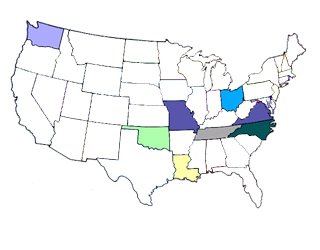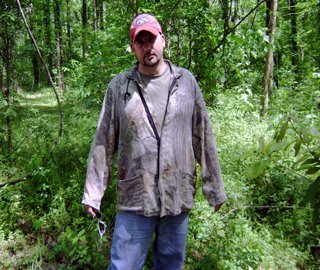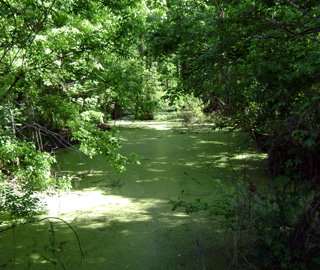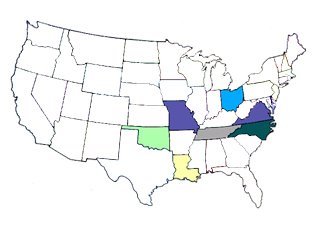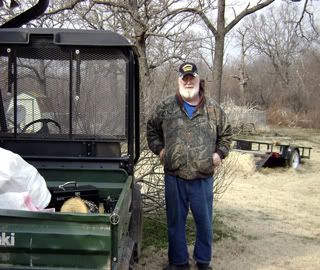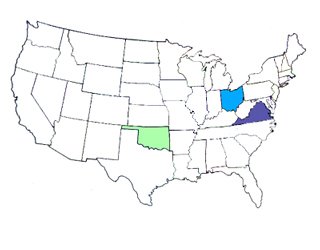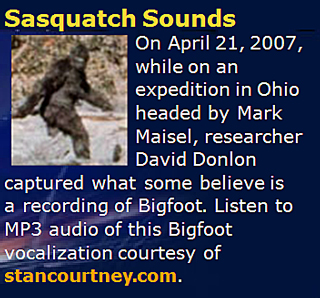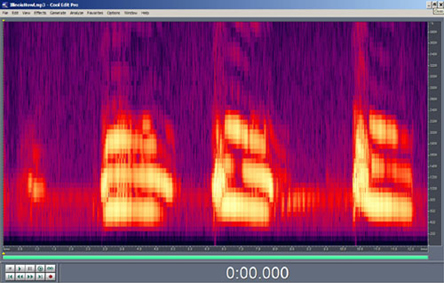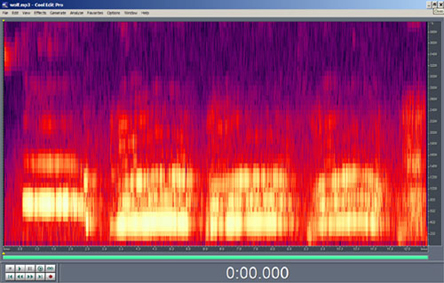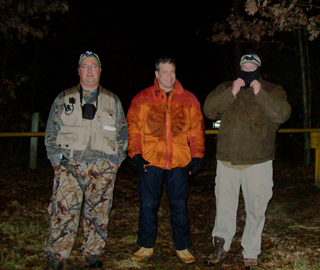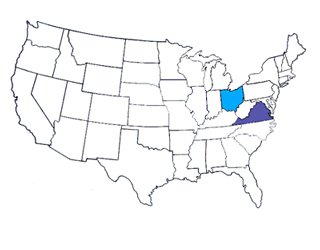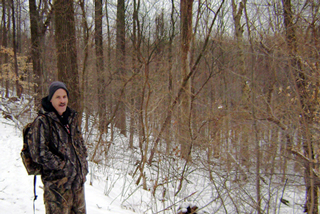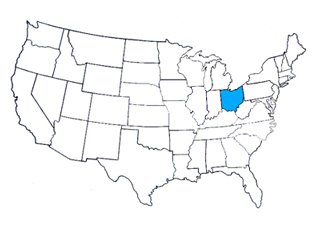My family and I have lived along a small wooded creek in Central Illinois for almost twenty-two years. Until May of 2005 we had neither seen nor heard anything unusual.
Wildlife that we have seen along and near the creek includes: beaver, bobcat, coyotes, deer, groundhogs, fox, mink, mountain lions, opossum, rabbits and raccoons. For a great article on mountain lions in Illinois see:
The beast of the bluffs by Scott Maruna.
There has been nothing unusual about the wildlife we see. Most people when they travel through Illinois see mainly corn and soybean fields not realizing the miles and miles of wooded rivers and streams that drain the fertile prairie.
From 1986 to 2002 we raised llamas on a two acre pasture that borders the creek. We had several
Great Pyrenees dogs for protection from the coyotes. The Great Pyrenees are quite vocal but nothing strange was noticed or heard in all those years.

On the 23rd of May 2005 my world changed forever. My wife came home one evening around 8:30 p.m. I went outside onto the driveway and noticed that my seven
month old
Karelian Bear Dog puppy (Belle) was out by the barn barking towards the creek. I told my wife I was going to take the dog to the creek and show Belle where the deer bedded down in the tall grass close to the creek.

I put a lead on the dog and as I approached the edge of the backyard going into the pasture I heard what sounded like a giant man roaring towards the house. It is difficult to put into words exactly what it sounded like, but it was a very clean sound, not like a scream. And it sounded like whatever the animal was, it's chest cavity was very large. The roar also had a distinctively human sounding element to it. The closest sound that I can find is a
Digital Bigfoot Recording created by Matt Knapp and featured on
Lets Talk Bigfoot! with Teresa Hall.
After that night I started recording nightly. I have recorded
wood-knocks, howls, unusual voices. Then on the fourth of April 2006 I recorded on five different nights what I call the
Illinois Howl. This recording has been discussed by
THE BLOGSQUATCHER in an article entitled:
The voice of bigfoot? The Illinois Howl.
What has bothered me since that time is why did that animal pick my home to stop by and howl? Why only howl that April and May, and why not since then? Why did I not hear this animal sometime before during the twenty-plus years we have lived here? Assuming that what ever is howling is intelligent and has a purpose what is the reason for the howl and why only at my home? I have spoken with neighbors and none of them have heard anything unusual.
Recently I was visiting a fellow researcher and I asked her to listen to some of my sounds and to give me her honest opinion specifically about the Illinois Howl.
Stan - "Do you think this is a locator call, the animal trying to find other members of it's family?
My friend - "No."
Stan - "Do you think this is some type of mating call?"
My friend - "No."
Stan - "Do you think this is imitating the coyotes?"
My friend - "No."
Stan - "Then what does it mean?"
Her answer was "Stan, I believe it is imitating Belle."
Stan - "What do you mean, imitating Belle and why?"
My friend - "It is a well known phenomena for coyotes to send in a lone member of the pack to play with a dog, get it's confidence and get it to follow out into the woods where the pack descends upon the dog and kills it." I think whatever is doing those howls is doing the same thing, trying to get Belle to come out so it can kill her."
I was shocked. I had never considered that perhaps Belle was the single thing different about my place in the last twenty-two years. When we had the Great Pyrenees they were restricted to the pasture, and seldom ventured into the woods. Belle from the age of three months to two years ran with wild abandon through the woods much as a teenager. Being a hunting dog, she is extremely alert, and always looking for something to chase, whether squirrels , rabbits or deer. As Belle has matured she has calmed down, she sleeps more and is more satisfied to be let out in the evening to exercise and then be restricted to a fenced in area of the backyard for the rest of the night. Belle spends her nights on a brick wall that encloses our patio.
Like most dogs Belle does bark some but once in about every six weeks goes into a strange drawn out howl. The first time I heard her do the strange howl was the fourth of April, 2006 when I recorded the first Illinois Howl.
On this recording you can hear coyotes, followed by Belle's barking, followed by the Illinois Howl and then Belle's strange drawn-out howls.
So why have I not heard or recorded the Illinois Howl in two years? My only conclusion, is that since Belle is no longer in the puppy stage, she stays out of the woods and stays closer to the house.
Belle has become less of a threat, or a perceived threat to whatever is out in those woods and making those howls.
